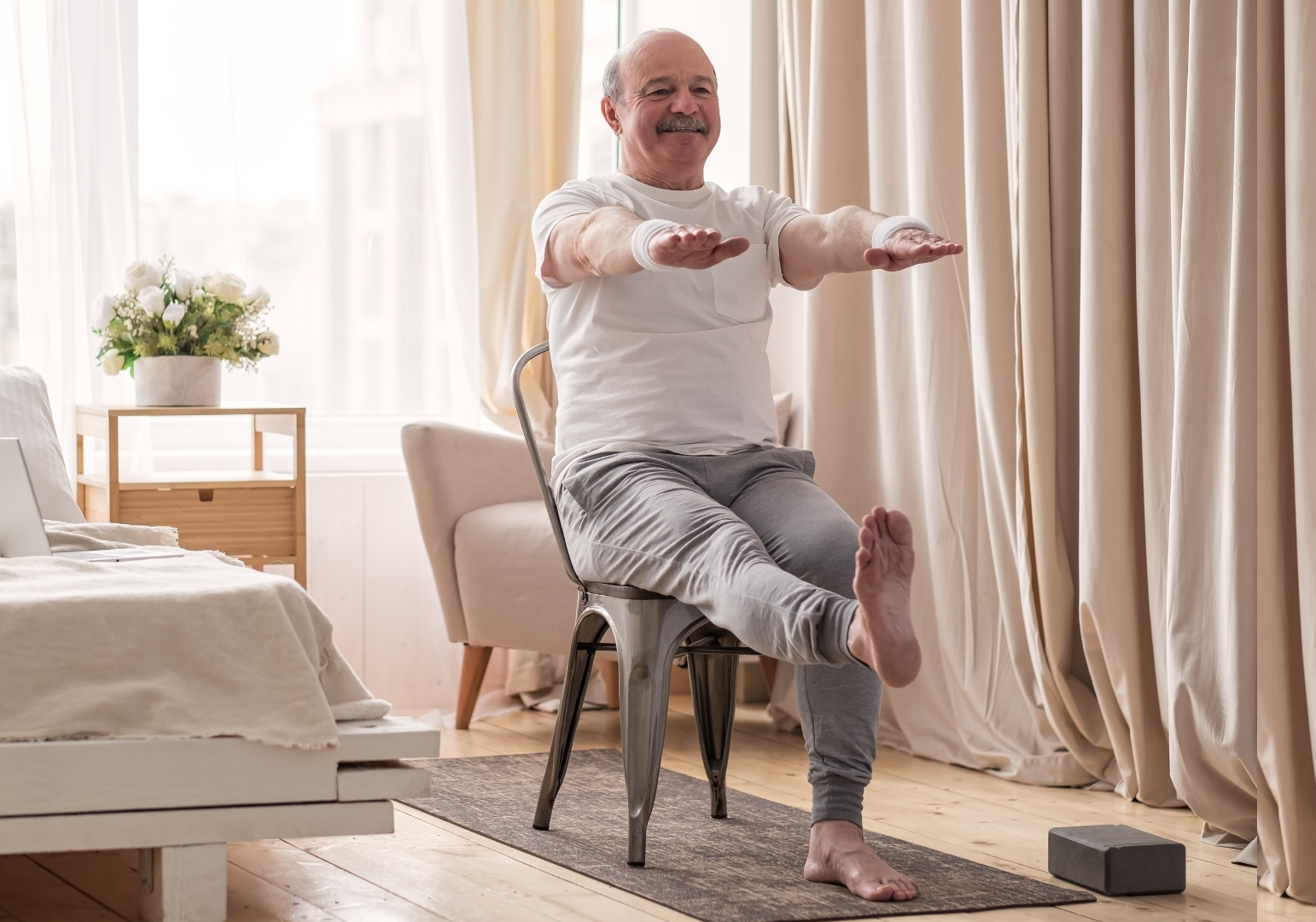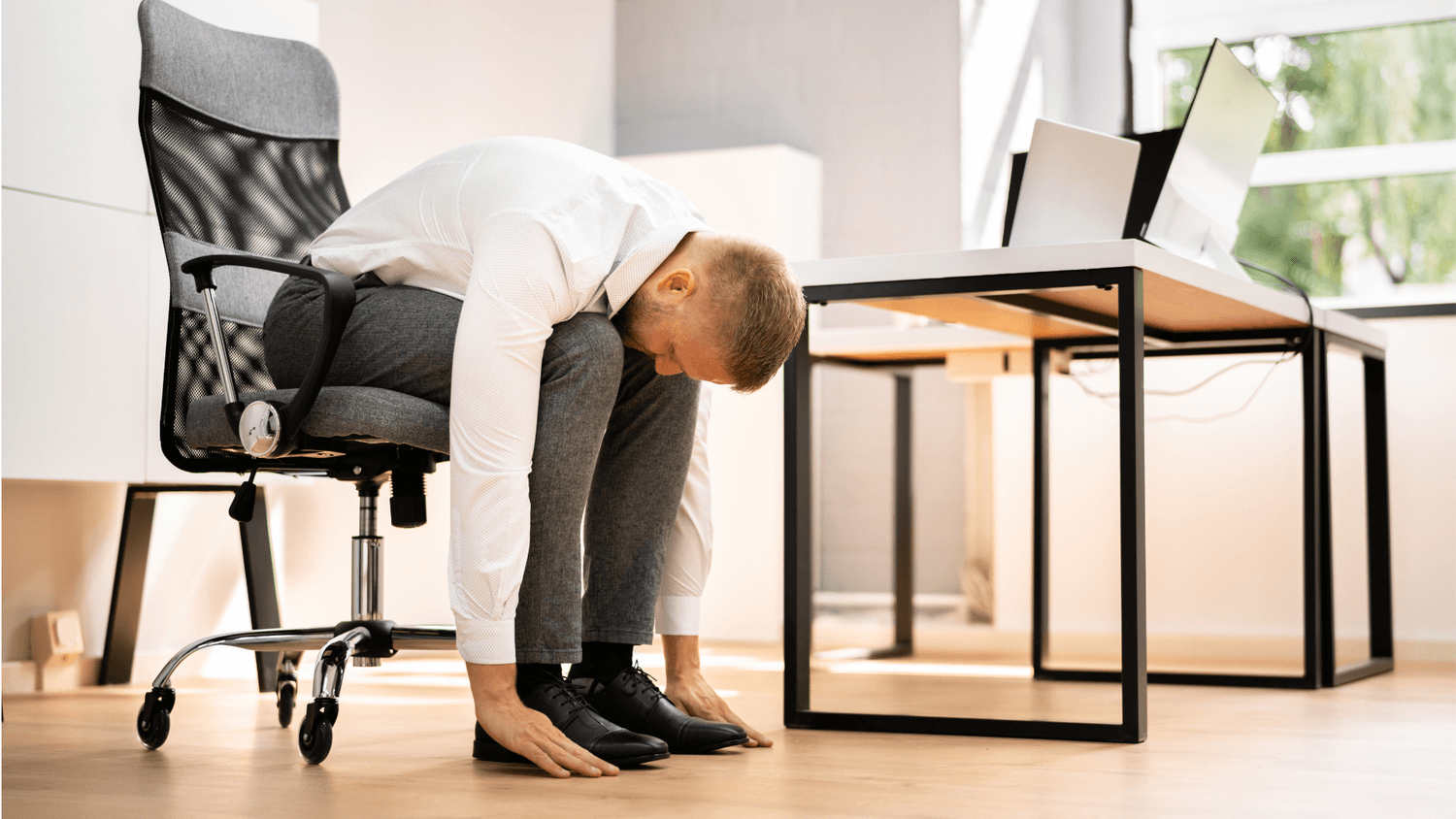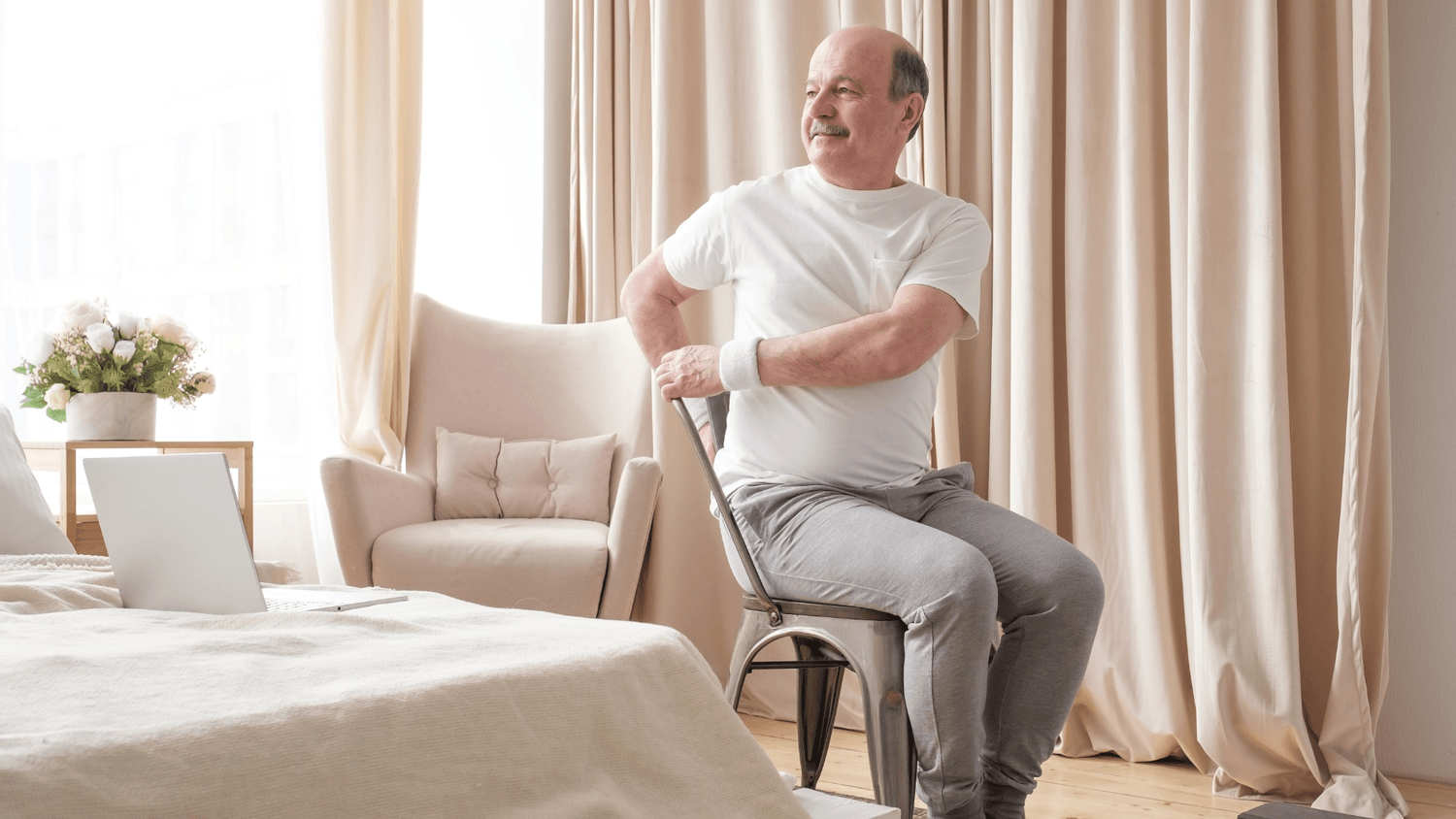Effective Chair Exercises for Lower Back Pain

Do you feel like lower back pain is holding you back? You'll be relieved to know that simple chair exercises can provide a solution. These exercises are specially designed to ease discomfort and improve mobility without needing fancy equipment or heading to the gym. By incorporating them into your daily routine, you can experience relief while sitting comfortably at home or at work. This post reveals how chair exercises for lower back pain can empower you to move more freely and confidently. Say goodbye to persistent aches and hello to a more active, pain-free life.
Understanding Lower Back Pain
Lower back pain can be a real hindrance, affecting your ability to enjoy daily activities. But understanding what's causing the pain and recognizing its symptoms are the first steps to managing it. While chair exercises for lower back pain can be extremely helpful, it’s good to know why the pain occurs and what signs to look for.
Common Causes of Lower Back Pain
Several factors can lead to lower back pain, and pinpointing the cause can make it easier to address. Here are some common culprits:
- Poor Posture: Sitting or standing incorrectly can strain your back muscles. Think of your body like a house — if the foundation isn't stable, the whole structure feels off.
- Muscle Strain: Overworking those muscles during physical activity or lifting heavy objects can leave your lower back sore and tender.
- Underlying Conditions: Issues like herniated disks, arthritis, or osteoporosis can contribute to persistent back pain. While these conditions require medical attention, they can be managed alongside exercises.
Symptoms of Lower Back Pain
Recognizing the symptoms early can help you prevent further complications and start using chair exercises for lower back pain more effectively. Here’s what to watch for:
- Dull Ache: A continuous low-level pain that can make it hard to move freely.
- Stabbing Sensation: Sharp pains when bending, lifting, or twisting.
- Limited Mobility: You might notice stiffness that makes ordinary tasks like tying shoelaces challenging.
- Tingling or Numbness: Sometimes pain is accompanied by a pins-and-needles feeling which might indicate nerve involvement.
When you notice these signs, it's time to consider adding exercises into your routine to bring relief and strengthen your back.
Benefits of Chair Exercises for Lower Back Pain
Incorporating chair exercises into your routine can be straightforward and surprisingly effective for managing lower back pain. These exercises are not only convenient, but they also offer numerous benefits for improving flexibility, core strength, and reducing pain. Let's explore how chair exercises can aid those frequenting the battle against persistent back discomfort.
Improvement in Flexibility and Mobility
Chair exercises can significantly enhance your flexibility and mobility. Imagine your muscles and tendons as rubber bands; the more they stretch, the less likely they are to snap under pressure. By engaging in gentle stretches while seated, your muscles can gradually lengthen and loosen. This process reduces stiffness and enhances mobility, allowing you to move with greater ease and less discomfort. In essence, the more you weave these exercises into your fabric of daily activities, the smoother and more fluid your movements become.
Strengthening Core Muscles
Your core is the central powerhouse supporting your spine and lower back. Like the sturdy trunk of a tree, a strong core helps stabilize and balance your body. Chair exercises for lower back pain often involve movements that target these core muscles. A strengthened core not only supports your lower back but also acts as a shield against potential injuries. Consistent chair workouts can help fortify this central region, making daily tasks easier and your back more resilient against strain.
Reduction of Pain and Discomfort
Regular chair exercises can lead to a noticeable decrease in pain and discomfort. Think of exercise as an antidote, gradually working to nullify the persistent ache. Engaging in light, consistent movements increases blood flow and releases endorphins—the body's natural painkillers. Over time, these exercises can help diminish the intensity of pain and even stave off future episodes. The beauty of this approach lies in its simplicity: you don't need to hit the gym hard to reap the benefits; even small, consistent efforts can make a significant difference.
Effective Chair Exercises for Lower Back Pain
Introducing chair exercises for lower back pain into your daily routine can make a remarkable difference in how you feel. These exercises are accessible and easy to do, even in the comfort of your home or at the office. Embrace the simplicity of chair workouts to ease discomfort and improve your back health.
Seated Cat-Cow Stretch
The Seated Cat-Cow Stretch offers a gentle way to mobilize your spine and relieve lower back tension. It's an exercise inspired by yoga's popular cat-cow pose, adapted for a chair.
1. Sit comfortably with your feet flat on the ground and your hands resting on your knees.
2. Inhale deeply, arch your back, and look up, letting your stomach drop towards your thighs.
3. Exhale as you round your spine, tucking your chin to your chest and pulling your belly button towards your spine.
4. Repeat these movements slowly for 5 to 10 breath cycles, paying attention to how your back feels.
Seated Forward Bend

Performing a Seated Forward Bend helps stretch the lower back and hamstrings, offering soothing relief.
1. Sit at the edge of your chair, ensuring your feet are flat and your knees are wide apart.
2. Inhale deeply, raising your arms overhead.
3. Exhale as you fold forward from your hips, letting your hands fall to the floor or rest on your feet.
4. Hold for a few breaths while feeling a gentle stretch along your spine.
5. Slowly roll up, one vertebra at a time, and return to an upright position. Repeat 3 to 5 times.
Chair Leg Extensions
Chair Leg Extensions target lower back and hip strength, crucial for stability and support.
1. Sit up straight and place both feet flat on the ground.
2. Extend one leg out in front of you, so it's parallel to the ground.
3. Hold for a moment, then slowly lower your leg back down.
4. Repeat with the opposite leg, performing 10 to 15 repetitions per side.
Seated Torso Twist

Enhancing spinal mobility can alleviate stiffness, and the Seated Torso Twist is perfect for this.
1. Sit tall with your feet flat and your spine straight.
2. Place your right hand on the back of the chair and your left hand on the outside of your right knee.
3. Inhale and lengthen your spine, then exhale as you gently twist to the right.
4. Hold for a few breaths, deepening the twist with each breath.
5. Return to center and repeat on the opposite side.
Ankle Pumps and Circles
Simple ankle movements like Ankle Pumps and Circles can improve circulation and alleviate back tension.
1. With feet flat, lift your heels and point your toes upwards as if pressing on a gas pedal. Then drop your heels and lift the toes.
2. Perform 10 to 15 repetitions.
3. Incorporate ankle circles by lifting one leg at a time and rotating your foot clockwise and then counterclockwise, 10 times each.
Integrate these exercises into your daily routine to discover how chair exercises for lower back pain can contribute to a pain-free lifestyle. By dedicating just a few moments each day, you'll be setting the stage for improved well-being and comfort.
Tips for Incorporating Chair Exercises into Daily Routine
Finding time to focus on exercises, particularly ones that target lower back pain, can seem challenging. But by integrating chair exercises for lower back pain into your daily routine, you can experience relief without overhauling your schedule. These exercises fit effortlessly into your day, making it easier to stay committed and reap their benefits.
Setting a Schedule
Consistency is key when it comes to exercise. To make sure you stick with your chair routine, it helps to establish a schedule. Here are some suggestions:
- Morning Ritual: Begin with a few gentle stretches right after you wake up. It sets a positive tone for the day and prepares your muscles for movement.
- Work Breaks: Incorporate exercises during 5-10 minute breaks. Set reminders on your phone or computer to prompt you. This not only helps with back pain but also refreshes your mind.
- Evening Wind Down: Finish your day with relaxing exercises. It helps release the tension built up throughout the day and prepares your body for a restful night.
Creating an Ergonomic Workspace
Unseen discomfort often lurks in the arrangement of your workspace. An ergonomic setup minimizes stress on your lower back, aligning your body for both work and exercise. Here’s how you can optimize your space:
- Seat Position: Adjust your chair so your feet are flat on the floor, knees at a 90-degree angle. This basic positioning eases back tension and improves posture.
- Desk Height: Ensure your desk isn't too high or low—your elbows should form a right angle when typing to reduce strain on your back.
- Supportive Chair: Invest in a chair with lumbar support. It’s like having an invisible hand supporting your lower back all day.
Listening to Your Body
Engaging in chair exercises for lower back pain should always include tuning in to what your body tells you. Here's how you can make sure you're doing what’s best for your health:
- Pain Signals: If a movement intensifies pain, it's crucial to stop. Exercises should challenge but not harm.
- Adjustments and Modifications: Always be ready to modify exercises. For instance, if a stretch feels too intense, ease off until it’s comfortable.
- Rest Days: Like any routine, balance is essential. Include rest days where you focus on different activities or gentle movements.
These practices for incorporating chair exercises into your daily routine not only support lower back health but also enhance your overall well-being.
Consulting with a Healthcare Professional
When engaging in chair exercises for lower back pain, it’s crucial to first consider consulting with a healthcare professional. Your health is your most valuable asset and getting expert advice helps you make informed decisions that cater to your specific needs. Whether you’re dealing with sporadic discomfort or chronic pain, a healthcare professional can offer invaluable insights tailored to your situation.
Personalized Assessment
A healthcare professional conducts a thorough assessment of your condition. Through this evaluation, they can identify any underlying issues contributing to your lower back pain. Think of it as a health audit—every detail is scrutinized to provide clarity.
- Medical History Review: Understanding your background helps in pinpointing causes and crafting suitable exercise recommendations.
- Physical Examination: A hands-on approach can highlight specific areas where you need more support or strength.
Tailored Exercise Recommendations
Knowing which chair exercises for lower back pain are best suited for you is not always straightforward. A professional can tailor exercises to ensure they’re both effective and safe.
- Exercise Modification: Adjustments can be made to accommodate any limitations, ensuring exercises are beneficial without causing strain.
- Progress Evaluation: As you advance in your routine, your healthcare provider can update your exercise regimen to match your progress and needs.
Safety Precautions
Engaging in any exercise plan without guidance can sometimes lead to added strain or injury. Consulting with a healthcare professional ensures you’re aware of any necessary safety precautions.
- Correct Technique: Learning the right way to perform exercises helps prevent unnecessary stress on your back.
- Monitoring Pain Levels: Understanding the difference between discomfort from exercise and harmful pain is essential.
Ongoing Support and Advice
Having ongoing support from a healthcare professional provides peace of mind. You have a reliable point of contact for any questions or adjustments needed as you incorporate chair exercises into your routine.
- Regular Check-ins: Scheduled visits help track your progress and make necessary changes.
- Encouragement: Sometimes, knowing you have someone monitoring your journey can be incredibly motivating.
Remember, while chair exercises for lower back pain can be powerful tools, having professional guidance ensures your path to pain relief is both effective and safe.
Conclusion
Chair exercises for lower back pain are essential tools in managing discomfort and enhancing quality of life. These exercises are accessible and practical, providing a straightforward method to strengthen your core, improve flexibility, and reduce pain. Incorporating them into your routine doesn’t require a dramatic lifestyle shift.
Start today to embrace the benefits. Whether you're at home or the office, these exercises can easily become part of your daily life. Consistency is your ally in building a stronger, more resilient back.
Have you tried chair exercises yet? If not, challenge yourself to take the first step. Your back—and overall health—will thank you. Remember, each small effort counts. Transform your daily routine and experience the relief you deserve.

You Can Fix Your Back...
You Just Need The Right Program
- Reduce your sciatic pain in days, not weeks.
- No more endless doctor visits—take control at home.
- Empower yourself with a program backed by real results.
- 2024 Sciatica Self Treatment / Back Pain Self Treatment














